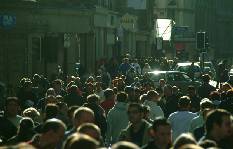
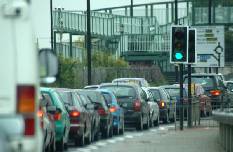
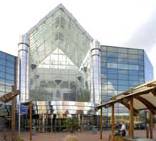

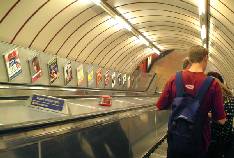
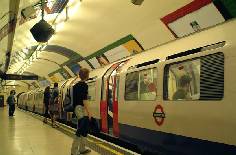
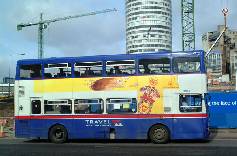
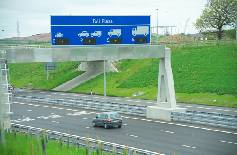

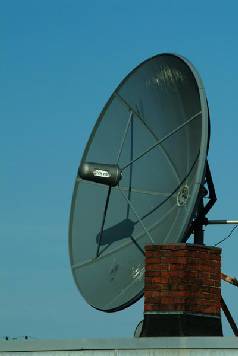
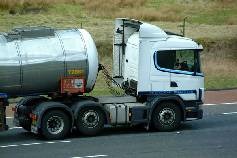
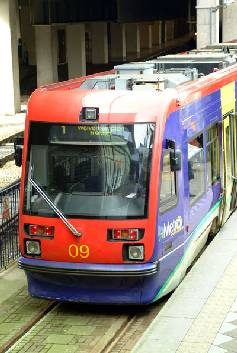
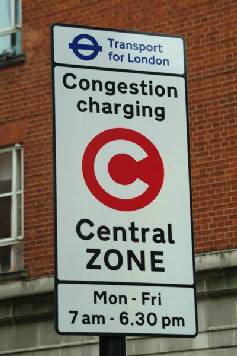
Why Congestion is
Increasing
The number of registered cars on Britain's roads is constantly getting larger. The number of cars grew from just under 22 million in 1991 to over 25 million in 2001. In 2001 there were four times more cars than there were in 1961 (6.2 million). There are many reasons for this increase in cars, some of which will be given below, but one of the simplest causes is the rise in the population.
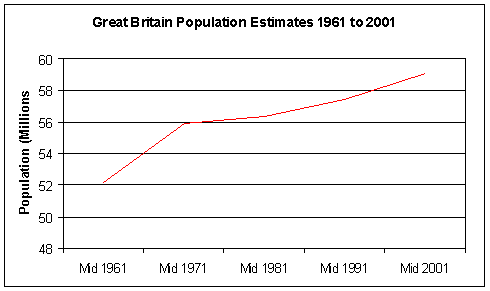
The UK population has increased
by 6.5 per cent in the last thirty years or so, from 55.9 million in mid-1971 to
59.6 million people in 2003. In every year since 1901, with the exception of
1976, there were more births than deaths in the UK and the population has grown
due to natural change. Up until mid-1990s this natural increase was the
principle cause of population growth. However, since the late 1990s, migration
into the UK has been having more of an impact. There are now less people
being born but people are now living longer, with fewer children under 16 and
more people over 65. This has lead to the UK having an ageing population.
More people and longer, healthier, lives create more traffic. The way that
we lead our lives also has a large impact on the numbers of cars on the road.
The car is the most common
choice of transport with 69% of journeys to work being done by car. People
are also travelling further to get to work than they used to. Over the
last decade (1991 to 2001) the average distance people travel to work has gone
up 17% to an average of 8.5 miles. One of the reasons for this could be
the drop in the number of people who move home when they change jobs.
People are also travelling
further for leisure. As with commuting journeys, the average distance
travelled for each trip has increased - by around 11% to an average of 6.8
miles. People are taking more short breaks, 2 to 3 days, that
are often done in the car. The out of town shopping areas and housing
estates on the edges of towns developed in the 1980's and 90's have resulted in
more and longer car journeys.
The overall number of people in
employment has grown by 2% since 1990 and our rising wealth is creating a demand
for goods and services. Over the last twenty years, the amount of goods
moved has grown by around 70%, and despite the number of goods vehicles licensed
falling by one fifth, there has been a more than 40% rise in goods vehicle
traffic. Although lorries account for less than 2% of vehicles, they represent
13% of traffic on motorways, with vans and light goods vehicles accounting for
another 11%.
The
patterns that have been just discussed, along with current government policies,
suggest that there is going to 20% more traffic in 2010 than there was in 2000.
Congestion is going to increase; the problems and some possible solutions are
outlined next.
Problems Caused by Congestion
Congestion
costs the country a lot of money. Times spent in jams are not available for other activities; and
unpredictable and unnecessarily long journeys add costs to business. These
costs would be through time lost to business travellers and inefficiencies in
their supply chain. The Confederation of British Industry estimates congestion
costs the country's economy £20 billion a year.
Congested conditions are far more damaging to the local
environment, especially local air quality, than free flowing traffic. Fuel
consumption also goes up, as the most efficient speed for most vehicles is
around 50 mph.
Drivers often find delays
frustrating or irritating and they often resent being held up even if they had
nothing in particular to do with the time lost. Because their trip may be
delayed people often feel they have to leave extra time for journeys.
Using up extra time like this annoys people and sometimes it can be hard to
determine how much time to allow for congestions, as hold-ups are unpredictable
in incidence or duration. Between
1982 and 2000 the average traffic delays increased from 7 hours per person per
year to 27 hours.
Congestion makes driving more
unpleasant, and can put drivers in a bad mood. It is a major source of driver
stress, and makes many people feel frustrated, angry, anxious, confused, and/or
exhausted. Other problems congestion can cause include the following:
encouraging competitive or aggressive driving; making driving harder; limiting
drivers freedom of action to travel where and when they want; and making
accidents or mishaps more likely.
Possible
Solutions to Congestion
One answer is to make better use
of the space available to us. We can do this by: managing urban growth to make the fullest use of public transport; locate
shops, leisure and entertainment, and offices near to major public transport
interchanges; and building housing within existing urban areas.
We can also change the way that we travel. Work place or school travel plans that include car sharing, more use of public transport, and walking or cycling can all help. For more about school travel plans see our travelwise or our safer routes to school pages. The government is providing funding to help educate people and set up new travel plans.
Working
from home making use of computers and the internet, known as teleworking, can
also help. The number of teleworkers has increased by 13% each year since
1997. Studies estimate teleworking could reduce car commuting by 6% by
2015. Many companies are now starting to have virtual meetings where the
use of web cameras and the internet can allow people to attend a meeting even
though they may be in many different places.
The highways agency will also be
working to manage traffic better on major roads, such as motorways. They will
establish more control centres that will monitor the motorway network and
organise action when an incident occurs. The
agency will also deploy a uniformed motorway patrol service, operating round the
clock, with powers to take action and a focus on taking whatever steps are
necessary - as soon as possible - to get traffic flowing.
It is estimated in the first two years it will be able to reduce the
delays caused by incidents on motorways by 5%.
Drivers can also make use of
modern technology. On board congestion monitors and telecommunications has
enabled several companies to offer drivers real time information about
conditions ahead of them, and options for alternative routes. Some systems can
also provide automatic notification of a collision to the emergency services,
with an accurate location. If drivers get information about the current
state of the network, where congestion is, weather conditions and
incidents/collisions before they start their journeys congestion can be avoided
or reduced. This can be gained using the media or the internet. One
useful site for looking at traffic flow is: www.highways.gov.uk/trafficinfo/
In a
ten-year plan published in 2000 the government has provided a major increase in
public transport funding along with producing extra road capacity and suggested
the importance of congestion charging. Congestion charging could be done
in four ways: payment for entering or being in an urban area within a
defined boundary (the London scheme has proved very successful); payment for
using new capacity on inter-urban roads (such as the M6 Toll Road); to pay to
use new lanes after a road has been widened (this in now being done on some
highways in the United States); to pay to use existing capacity on rural roads
(this could push traffic onto other roads though).
With modern technology a fifth method of congestion
charging is now being suggested. This could also change the way that road
users are taxed as they could be charged for how often, when and where they use
the roads. Advantages of general charging to use the roads would be: road
pricing would make people look at other methods of travel more; it would reduce
the cost of motoring on clear roads; and it would avoid the problems caused by
only charging for a few roads as motorists would not be able to change their
routes to avoid being charged. Researchers have suggested that a scheme
like this would cause people to use the roads that we have better and would
avoid the reduction in speed across the road network the growth in congestion is
causing. For an example of how a general charging scheme could help keep
traffic flowing click here.
No country has yet introduced a system where drivers are
charged whenever they drive, mainly because the technology was not good enough.
The government is going to introduce charging for lorries in 2006 so it will be
interesting to see how well it works.